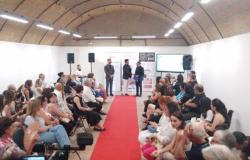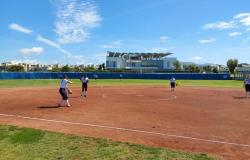Florence, 26 June 2024 – It was an evening dedicated to the future of transport and urban planning in our region, organized by Rotary Club of Florence South at Villa Viviani. The guest of honor was the regional councilor Stefano Baccelli, with delegation to Infrastructure, Transport, Urban Planning and Planning. The meeting was opened by the welcome of the Rotary President Luca Petroni, who introduced his guest by inviting him to illustrate the regional transport policy to those present: “If we talk about infrastructure – began the Councilor – Tuscany is on average with European levels but not with those of the more developed Nordic states, which represent an objective for us to achieve. Characterized by some peculiarities in terms of development and anthropization – such as the Florentine metropolitan area or the connection between Florence-Prato and the coastal part of Livorno-Pisa-Lucca – our region presents two areas that we have defined as “Integrated Urban”, because despite having different characteristics they still present the need for relevant public services, such as universities, hospitals of clear excellence, the maritime economy, and the major industrial districts (such as shipping and paper). For this reason – Baccelli continues – we are firmly convinced that every regional policy is aimed at developing, supporting and promoting new integrated supra-municipal planning tools. There is also “diffuse Tuscany”, i.e. that of the internal areas: the villages and coasts that are most difficult to serve both in terms of infrastructure and public or local transport. In Tuscany the propensity to use private vehicles is still very important, despite the investments made in LPT placing us among the top regions in Italy. Speaking of maritime cabotage to, from and between the islands of our Archipelago, we are in the process of re-editing the new tender for territorial continuity, which aims to guarantee citizens, workers, students and tourists of the islands equal access to constitutional rights to study, healthcare and work. However, certainly, the largest economic commitment is that allocated to the 14 regional railway lines, therefore to the service contract with Trenitalia, the managing entity, and to the 104 million kilometers that we operate on the TPL Ferro. Overall – the Councilor points out – the Tuscany Region spends 660 million euros a year on local public transport and has equally purchased new rubber-tyred and railway rolling stock; we recently received the 50th new train out of the 85 envisaged in the contract with Trenitalia, more comfortable, reliable and eco-compatible. Furthermore, the two Garfagnina and Faenza sections were saved from the risk of being abandoned.” In his speech Baccelli underlined that 350 new bus models have been purchased in two years, and another 700 buses will be renewed in the next two years. “Overall we are talking about 2100 out of 2700 buses renewed, which means that disruptions due to faults will be reduced. thanks to the lowering of the average age of the vehicle fleet and, obviously, we will notice a lower environmental impact. Infrastructure investments are also relevant and I provide a macroeconomic picture of the size of the Tuscany Region, which has chosen to request all the financial instruments available for infrastructure investments, not stopping only at its own resources, but making use of all available European funds, from PNRR to the development and cohesion fund to the complementary one, up to the structural funds functional to the new European programming. Our regional development plan envisages something like over 4.4 billion euros for Tuscany’s infrastructure: almost half of the total regional development investments, to which are obviously added the investments of entities: motorway concessionaires, RFI, ANAS. ” Another project to which the Councilor referred during his speech should also be highlighted, it is a combined port and railway development arrangement: it is the connection of the port of Livorno with Northern Europe, i.e. the possibility of transporting ” without load breakage” of semi-trailers and mega containers directly from the port of Livorno to Helsinki and Dorthmund, i.e. the Scandinavian corridor towards the Mediterranean envisaged by the European Union. “How do we make it happen? Meanwhile with the Darsena Europa, financed by the Tuscany Region with 200 million euros out of a total of 450 million, then also with the construction of the port-interport railway crossing, financed with 20 million euros out of 27 by the Tuscany Region, for the connection with the Collesalvetti -Vada, i.e. the bypass for Pisa financed by the Draghi government and then defunded by the current government for 290 million euros.”
For Latest Updates Follow us on Google News





